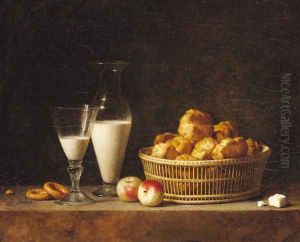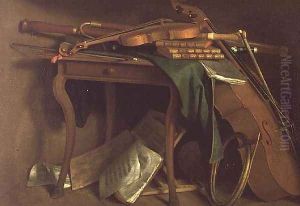Henri Roland de la Porte Paintings
Henri-Horace Roland de la Porte was a French painter born in 1724 in Paris, France. He was a prominent figure in the Rococo movement, known especially for his intricate and vibrant still life paintings. Roland de la Porte’s artistic journey began under the tutelage of his father, who was also a painter, ensuring that he was immersed in the world of art from a young age. Despite this early start, much of his initial years and training remain somewhat obscure, a common issue with many artists of the period whose lives were not well-documented.
Throughout his career, Roland de la Porte developed a distinctive style that emphasized the beauty of everyday objects, from the texture of fabrics to the luminosity of fruits and the delicate arrangements of flowers. His works are characterized by a meticulous attention to detail, a rich palette, and a deep understanding of light and shadow, elements that combined to create compositions of both realism and allure. He was particularly adept at rendering materials and surfaces in a way that they almost feel tangible to viewers, a quality that set his work apart from many of his contemporaries.
Despite his talent, Roland de la Porte did not achieve the same level of fame as some of his peers during his lifetime. However, he was appreciated within certain circles, receiving commissions from the French aristocracy and contributing to the decoration of several notable buildings in Paris. His career reflects the broader trends and tastes of the French art world in the 18th century, particularly the shift towards more intimate and personal subjects in painting, as opposed to the grand historical and mythological themes that had dominated earlier in the century.
Henri-Horace Roland de la Porte's life and career were eventually overshadowed by the tumultuous events of the French Revolution, which began in 1789. The Revolution brought significant upheaval to France, profoundly affecting the arts and society. Roland de la Porte died in 1793, amidst the chaos of these years, leaving behind a body of work that would later be recognized for its contribution to the development of still life painting in France. His paintings are now held in various museums and collections around the world, appreciated for their beauty and technical skill, and serve as a testament to the rich artistic heritage of the Rococo period.

